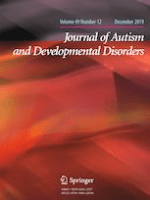
JOURNAL OF AUTISM AND DEVELOPMENTAL DISORDERS
Scope & Guideline
Transforming research into impactful interventions.
Introduction
Aims and Scopes
- Multidisciplinary Research on Autism:
The journal encompasses a wide range of studies from various disciplines including psychology, medicine, education, and social sciences, fostering a holistic understanding of autism spectrum disorders. - Focus on Intervention and Treatment:
There is a consistent emphasis on evaluating and developing interventions aimed at improving outcomes for individuals with autism, including behavioral therapies, educational strategies, and family support. - Cultural and Societal Perspectives:
The journal explores the impact of cultural, social, and economic factors on the diagnosis, treatment, and lived experiences of individuals with autism, contributing to a more nuanced understanding of autism across different populations. - Genetic and Neurobiological Research:
Research articles often delve into the genetic and neurobiological underpinnings of autism, aiming to elucidate the mechanisms behind the disorder and its associated developmental challenges. - Parent and Caregiver Perspectives:
The journal frequently includes studies that capture the experiences, challenges, and needs of parents and caregivers of autistic individuals, highlighting the importance of their voices in both research and practice. - Longitudinal and Developmental Studies:
A significant number of publications focus on longitudinal studies that track the development of autistic traits and associated behaviors over time, providing insights into early identification and intervention.
Trending and Emerging
- Telehealth and Remote Interventions:
The COVID-19 pandemic has accelerated the adoption and study of telehealth interventions for autism, with many articles focusing on the effectiveness of remote assessment and therapy options. - Intersectionality in Autism Research:
There is a growing trend towards examining the intersectionality of autism with factors such as race, gender, and socioeconomic status, highlighting the complexities of autism across diverse populations. - Neurodiversity and Self-Advocacy:
Research focusing on neurodiversity, self-advocacy, and the lived experiences of autistic individuals is increasing, emphasizing the importance of understanding autism from the perspectives of those who experience it. - Parent-Mediated Interventions:
A significant rise in studies exploring parent-mediated interventions reflects a shift towards empowering families to participate actively in the intervention process, enhancing outcomes for their children. - Focus on Mental Health comorbidities:
There is an emerging emphasis on the mental health challenges associated with autism, particularly anxiety and depression, and how these comorbidities affect overall well-being and functioning. - Use of Technology for Autism Interventions:
The integration of technology, including apps and virtual reality, into autism interventions is gaining momentum, with research exploring their efficacy in supporting social skills and communication.
Declining or Waning
- Traditional Behavioral Approaches:
There is a noticeable decrease in studies solely centered on traditional behavioral interventions like Applied Behavior Analysis (ABA), as newer methodologies and holistic approaches gain traction. - Single-Domain Studies:
Research focusing exclusively on a single aspect of autism, such as solely social skills or communication deficits, is becoming less common, with a shift toward more integrative studies that consider multiple domains. - General Population Studies:
Research examining autism in general population samples is waning, as the focus increasingly shifts to specific subgroups, such as those with co-occurring conditions or diverse backgrounds. - Focus on Adult Autism:
While there is still relevant research on adult autism, the volume of studies specifically addressing adult experiences and outcomes appears to be lessening compared to the growing emphasis on early intervention and childhood studies. - Narrow Diagnostic Criteria Studies:
Research examining the implications of narrow diagnostic criteria for autism diagnosis has decreased as the field increasingly embraces broader, more inclusive definitions of autism.
Similar Journals
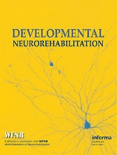
Developmental Neurorehabilitation
Bridging research and practice in pediatric rehabilitation.Developmental Neurorehabilitation is an esteemed journal published by Taylor & Francis Inc, dedicated to advancing the field of developmental neuroscience and rehabilitation. With an ISSN of 1751-8423 and an E-ISSN of 1751-8431, this journal serves as a vital resource for researchers, clinicians, and students interested in innovative therapeutic approaches and rehabilitation techniques for children and adolescents. Since its inception in 1997, Developmental Neurorehabilitation has focused on disseminating high-quality research, contributing to a deeper understanding of recovery processes in developmental disorders, and facilitating interdisciplinary dialogue among professionals. With its recognition in Q2 and Q3 quartiles across prominent categories such as Pediatrics and Rehabilitation, it stands out as a pivotal publication in its field, boasting Scopus rankings that reflect its significant impact—ranked #53 in Rehabilitation and #139 in Pediatrics, among others. While maintaining a commitment to quality research, the journal does not currently offer open access but remains accessible through institutional subscriptions, further enriching the academic landscape with critical insights into rehabilitation methodologies for developmental challenges and promoting better clinical practices to improve patient outcomes.
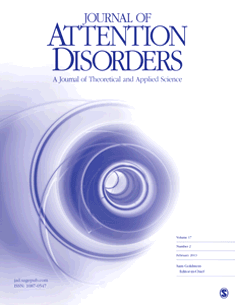
Journal of Attention Disorders
Empowering research to transform mental health practices.The Journal of Attention Disorders is a premier peer-reviewed publication dedicated to advancing the understanding and treatment of attention-related disorders. Published by SAGE Publications Inc, this esteemed journal has become a vital resource in the fields of Clinical Psychology and Developmental and Educational Psychology, consistently ranking in the Q1 quartile for both categories as of 2023. With a significant impact factor and a commendable Scopus rank—#37 in Developmental and Educational Psychology and #34 in Clinical Psychology—this journal fosters innovative research and evidence-based practices that contribute to the mental health field. Since its inception in 1996, the Journal of Attention Disorders has provided a platform for the latest findings and discussions, supporting researchers, practitioners, and students alike. While the journal remains non-open access, it ensures rigorous dissemination of crucial information, solidifying its importance in shaping future research and best practices concerning attention disorders.
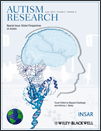
Autism Research
Advancing knowledge, transforming lives in autism research.Autism Research, published by WILEY, is a premier academic journal dedicated to advancing the understanding of autism spectrum disorders (ASD) through high-quality research and clinical studies. With the ISSN 1939-3792 and E-ISSN 1939-3806, this journal has been integral to the field since its inception in 2008 and has been consistently ranked in the Q1 quartile across categories such as Genetics (clinical), Neurology (clinical), and various facets of Neuroscience. Holding prominent Scopus ranks, including #18 in Genetics (clinical) and #26 in General Neuroscience, Autism Research provides a vital platform for researchers, clinicians, and students alike to disseminate innovative findings and foster collaborations aimed at improving diagnosis and treatment strategies for individuals with autism. While not an open access journal, it offers a blend of insightful articles and impactful research that is essential for professionals seeking to stay at the forefront of this rapidly evolving field.
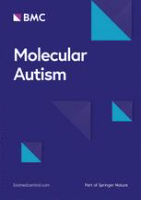
Molecular Autism
Illuminating the pathways of autism through research.Molecular Autism, published by BMC in the United Kingdom, is a premier open-access journal dedicated to publishing high-quality research on the molecular and genetic factors contributing to autism spectrum disorders. Since its inception in 2010, the journal has established itself as a vital resource for researchers and clinicians, offering insights into the developmental biology, neuroscience, and psychiatric dimensions of autism. With an impressive impact factor and rankings placing it in the Q1 category across multiple relevant fields such as Developmental Biology, Developmental Neuroscience, Molecular Biology, and Psychiatry and Mental Health, it serves as a critical platform for the dissemination of innovative research and interdisciplinary collaboration. The journal encourages open dialogue through its commitment to making research freely accessible, thereby advancing knowledge and fostering advances in the understanding of autism. By bridging diverse disciplines and engaging with cutting-edge research, Molecular Autism aims to enhance our understanding of autism's complexities and inform future therapeutic approaches.

Psicologia Clinica dello Sviluppo
Empowering scholars to tackle contemporary psychological challenges.Psicologia Clinica dello Sviluppo, published by SOC ED IL MULINO in Italy, is a noteworthy journal that focuses on the expansive fields of clinical and developmental psychology. Since its inception in 1998, the journal has been committed to disseminating high-quality research that bridges theoretical frameworks and practical applications within these domains. With its ISSN 1824-078X and E-ISSN 1824-078X, the journal provides a platform for scholars to explore critical issues in psychological development and clinical practice. Despite recent rankings placing it in the fourth quartile across both Clinical Psychology and Developmental and Educational Psychology categories, the journal is dedicated to fostering a growing body of knowledge that can influence policy and practice. Researchers, professionals, and students will find valuable insights in its contents, contributing to the advancement of psychology as a science and a profession. The journal accepts submissions and actively encourages contributions that tackle contemporary challenges in the field.

JOURNAL OF DEVELOPMENTAL AND BEHAVIORAL PEDIATRICS
Connecting disciplines to foster developmental success.JOURNAL OF DEVELOPMENTAL AND BEHAVIORAL PEDIATRICS, published by Lippincott Williams & Wilkins, stands as a pivotal platform for interdisciplinary research in the fields of pediatrics, psychology, and mental health. Established in 1980 and with a comprehensive coverage extending to 2024, this esteemed journal operates within the realms of developmental and educational psychology, medicine, and psychiatry, earning a commendable Q2 ranking in its respective categories as of 2023. Its overarching objective is to disseminate high-quality, peer-reviewed studies that address the intricate interplay between developmental milestones and behavioral health in children. Although it does not currently offer open access, the journal's influential presence in the scholarly community is underscored by its strategic positioning within the Scopus rankings, making it an invaluable resource for researchers, practitioners, and students committed to advancing the health and well-being of children and adolescents.

Journal of Behavioral Education
Innovating Practices in Developmental PsychologyThe Journal of Behavioral Education, published by SPRINGER, is a prestigious academic journal that serves as a vital resource for researchers and practitioners in the fields of developmental and educational psychology. Established in 1991, this journal has consistently contributed to the understanding of behavioral education through innovative research, theories, and practices. With an impressive Q1 ranking in Education and a Q2 ranking in Developmental and Educational Psychology, it is recognized for its significant impact, achieving a percentile rank of 78th in Social Sciences (Education) and 67th in Psychology. While the journal does not currently offer open access options, it is committed to disseminating high-quality studies that advance educational practices and enhance learning outcomes. The Journal of Behavioral Education is an essential publication for anyone dedicated to advancing knowledge in educational psychology and behavioral interventions.

CoDAS
Empowering research, bridging theory and practice in communication disorders.CoDAS, an esteemed academic journal published by the SOC BRASILEIRA FONOAUDIOLOGIA, serves as a leading platform for interdisciplinary research within the realms of linguistics, speech, and hearing sciences. Established as an Open Access journal in 2013, it ensures broad dissemination and accessibility of scholarly work, significantly benefitting researchers, clinicians, and students alike. Based in Brazil, CoDAS has garnered credibility with its impressive Q2 ranking in Linguistics and Language, as well as its rankings in Otorhinolaryngology and Speech and Hearing categories, reflecting its substantial contribution to these fields. The journal's impact is underscored by its robust Scopus rankings, including the 67th percentile in Language and Linguistics. With a commitment to fostering innovative research and bridging gaps between theory and practice, CoDAS continues to play a vital role in advancing knowledge and clinical practices in communication disorders and auditory sciences.
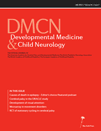
DEVELOPMENTAL MEDICINE AND CHILD NEUROLOGY
Elevating standards in developmental medicine and child neurology.DEVELOPMENTAL MEDICINE AND CHILD NEUROLOGY, published by WILEY, is a premier journal dedicated to advancing knowledge in the fields of developmental neuroscience, clinical neurology, and pediatrics. With an impressive impact factor, this journal is recognized for its contributions, achieving Q1 ranking in both Pediatrics, Perinatology and Child Health, and Neurology (Clinical) sectors, as well as Q2 in Developmental Neuroscience. Since its inception in 1958, the journal has been at the forefront of disseminating vital research that informs clinical practice and enhances child health outcomes. Researchers and practitioners benefit from its high-quality, peer-reviewed articles that address critical issues in child neurology, underpinned by a robust Scopus ranking and a formidable percentile standing in relevant categories. While currently not an open-access journal, it remains a key resource for those dedicated to the study of child development, particularly at its intersection with neurological health. With a commitment to excellence, DEVELOPMENTAL MEDICINE AND CHILD NEUROLOGY is an essential read for anyone engaged in the care and research of pediatric populations.
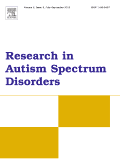
Research in Autism Spectrum Disorders
Fostering collaboration to enhance autism research.Research in Autism Spectrum Disorders, an esteemed journal published by ELSEVIER SCI LTD, is dedicated to advancing the understanding of autism spectrum disorders through innovative research and scholarly articles. Since its inception in 2007, the journal has carved out a distinguished place in the field, reflected in its robust 2023 Impact Factor and Q2 ranking in key categories such as Clinical Psychology, Developmental and Educational Psychology, and Psychiatry and Mental Health. By bridging the gap between research and practice, this journal serves as a vital resource for researchers, professionals, and students alike, fostering collaboration and knowledge-sharing among those dedicated to improving outcomes for individuals with autism. Featuring a broad scope that encompasses various aspects of autism research, the journal remains committed to publishing high-quality studies that drive the conversation forward in this critical area of study. Access options for the journal's content are available under the Elsevier guidelines, ensuring that pivotal research reaches a wide audience.